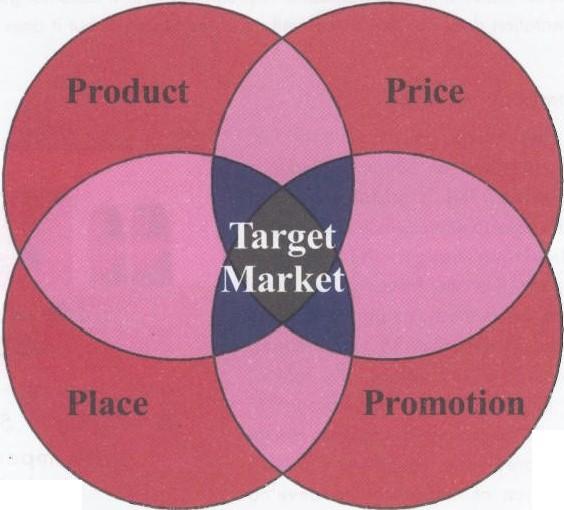What is Marketing?
The word marketing is arguably one of the most common terminologies used in the world of business. Marketing is so important that no business venture can survive without it. But come to think of it, what is marketing?
Marketing refers to those activities carried out by a business venture to promote their product or services online or traditionally. The purpose of any marketing endeavor is to create awareness and get potential customers to choose a company’s product or service over that of its competitors.
Tailoring one’s product or services to meet the needs of consumers is another vital aspect of marketing.
Peter F. Sticker says it all:
“Marketing aims to know and understand the consumer so well the product or service fits him and sells itself.”
The massive success of Apple Inc. is all thanks to Steve Jobs’ technical genius and most importantly, his extraordinary marketing skill. Jobs wasn’t just great at creating sophisticated tech. He understood the needs of consumers and made sure to develop innovative and beautifully designed products that satisfied those needs and desires.
Marketing and Branding
The effect marketing has on a brand cannot be overemphasized. While good marketing can help create a good impression in the mind of potential customers, black hat marketing methods, on the other hand, does the opposite.
No one enjoys having their browsing experience interrupted by an auto-play video ad. When a brand uses such a method to create awareness about its product or services, it only ends up ruining its reputation.
In addition to that, it is essential to note that marketing doesn’t start and end with brands just telling potential consumers how great their products or services are. Numerous studies have shown that people will only do business with a brand they know, like, and trust.
In today’s business world, brands have taken marketing to another level by genuinely showing how much they care for their customer’s well-being.
Building A Marketing Strategy
Brands wishing to get favorable results from a marketing campaign are expected to use the right marketing strategy.
A marketing strategy is a laid-out plan a business comes up with for reaching its target audience and getting them to purchase what it offers.
Every business needs a marketing strategy if it wishes to succeed. Developing an effective marketing strategy takes time and expertise, but it remains a necessity even for start-ups.
A good marketing strategy should cover the following:
- Identifying a business goal
- Market Research and learning about one’s customers
- Competitor Analysis
- Defining a Unique Selling Proposition (USP)
- Choosing the right marketing channel
Types of Marketing
Over the years, marketing has evolved from what it used to be. When once there were only print media houses to promote a brand’s product or services, the advent of television and the internet changed the game. Now brands have a wide variety of marketing methods to choose from.
There are two forms of marketing; online marketing and offline marketing. The difference between both is that while one relies on print, radio, television, and word of mouth to reach its target audience, the latter uses the internet.
A brand may choose to work with either of these or use both. But between both, online marketing has proven to be the most employed. The reason for this isn’t farfetched; people now spend more time online than they do listening to the radio or watching television.
So let’s look at some of the different types of online marketing that are available to today’s businesses:
-
Affiliate Marketing
An affiliate helps promote the product of a brand on whatever online channel they see fit. The good thing with using this marketing method is that businesses only get to pay the affiliate when the latter’s promotion generates a sale. Affiliate marketing is an effective method as the publisher will do everything possible to market a brand’s products to consumers for the commission they stand to get.
-
Social Media Marketing
Businesses employ this method to reach potential customers who already spend a great deal of their time on social media platforms. Great marketing on social media can help bring success to a business. It makes it easy for brands to interact with their customers and build a relationship. It can also help to drive leads and sales.
-
Word of Mouth Marketing(WOMM)
This is an unpaid form of marketing that has consumers doing all the work. WOMM is arguably one of the most trusted forms of marketing. According to a report from Nielsen, 92% of consumers trust recommendations from family and friends over other types of marketing.
Satisfied customers take it upon themselves to tell others how much they appreciate a product or service. A company only gets to this level by offering products or services that are of premium quality.
-
Content Marketing
Content marketing refers to any form of marketing that involves the creation, publication, and distribution of free content online. In an attempt to get the word out, businesses are known to spend heavily on content marketing each year.
Content marketing uses videos, infographics, blogs, podcasts, social media posts, and persuasive copy to attract and convert prospects into customers.
-
Search Engine Optimization
Also known as SEO, this digital marketing method is the process of optimizing a website for visibility on search engines. The goal of employing this method is to create awareness and get potential customers to find and visit one’s website.
The first page of Google is a profitable place for businesses. However, getting there doesn’t come easy. Companies spend a fortune optimizing their websites and web content to get ranked on the first page of the SERPs.
-
Email Marketing
Email marketing is one of the most direct and effective ways a business can connect with leads, nurture them, and eventually convert them into customers. Email marketing is a digital marketing method where companies send emails to prospects and customers.
The content of the emails could be educational, entertaining, or promotional as the case might be. On most occasions, the emails sent out aims at persuading potential customers to take actions that favor the brand.
-
Influencer Marketing
This method of marketing orients itself around an influential individual. Influencer marketing is yet another effective marketing strategy. A company looking to promote its products or services reaches out to an influencer in their industry or niche and finds a mutually beneficial way to promote its offering to the influencer’s vast audience.
-
Retargeting
Retargeting is the practice of serving display ads to individuals who have engaged with one’s website or brand in the past. Businesses use this method to lure existing or potential customers to revisit their website or purchase what they offer.
Studies have shown that 92% of people who visit a site for the first time aren’t looking to make a purchase. And so it becomes necessary for a brand to retarget these one-time visitors.
-
Brand Marketing
Brand marketing is a marketing move by brands to shape its public perception and to connect with its target audience. Brand marketing uses inspiration, storytelling, humor, and creativity to establish an emotional connection with existing and potential customers.
- Cause Marketing
Companies promote and support a charitable cause to boost their brand awareness. Some examples of cause marketing include licensing of charity trademarks for use in sales, public awareness campaigns for breast cancer, Pampers, and UNICEF Partnership, etc. Cause marketing is well suited to companies that deal directly with consumers.
The Marketing Mix in the Digital Age
The “marketing mix”, also known as “the 4 Ps” of marketing is considered to be the foundation of your marketing plan.
The marketing mix is a particular combination of the product, its price, the methods to promote it, and the ways to make the product available to the customer. Based on its understanding of customers, a company develops its marketing mix of product, price, place, and promotion. The elements of the marketing mix are intricately and sensitively related to each other. The marketing mix is good or bad as a whole.
All the elements have to reinforce each other to enhance the experience of the customer. When a change is proposed to be made in one of the elements, it has to be checked if the changed element still fits with and reinforces other elements, or has it started contradicting other elements, making the marketing mix less effective in serving customers.
Managers must manage these 4Ps in a way that customer satisfaction level is much higher than the competition. Decisions regarding the marketing mix form a major aspect of the implementation of the marketing concept.
Product
Product decision involves deciding what goods or services should be offered to customers. The product or service serves the basic need of the customer. The product provides the primary value to the customer. The customer must have initially got interested in the company primarily because of the product or service it was producing or proposed to produce. All other elements should be reinforcing the value proposition of the product.
An important element of product strategy is new product development. As technologies and tastes change, products become out-of-date and inferior to the competition. So companies must replace them with new designs and features that customers value. The challenging task is to include the latest available technologies and solutions to the latest needs of the customer in a company’s product.
Product decisions involve choices regarding brand names, warranties, packaging, and services that should accompany the product offering
Price
Price is the cost that the customer is willing to bear for the product and the way it is made available to him. Price represents on a unit basis what the company receives for the product which is being marketed. All other elements of the marketing mix represent costs. Marketers need to be very careful about pricing objectives, methods to arrive at a price, and the factors which influence the setting of a price.
The company must also take into account the necessity to give discounts and allowances in some transactions. These requirements can influence the level of the list price chosen. If discounts and concessions have to be given in certain transactions, the list price should have a negotiation margin built into it. Payment periods and credit terms also affect the real price received in any transaction. These kinds of decisions can affect the perceived value of a product.
In comparison to other elements of the marketing mix, the price can be changed easily. But an ill-considered change in price can change customer perceptions about the value of the marketing mix. In the absence of any objective knowledge about the quality of the product, the customer builds a strong association between price and quality. If the price of a product is reduced, customers may start regarding it as an inferior quality product.
If a company raises the price, customers may consider it a high-quality product, but there is also the risk that customers may regard the price as too high for the value that they are getting from the product. Price change, though easy to make, should always be done taking into consideration the effect the change will have on the attractiveness or otherwise of the marketing mix.
Promotion
Decisions have to be made with respect to the promotional mix: advertising, personal selling, sales promotions, exhibition, sponsorship, and public relations. By these means, the target audience is made aware of the existence of the product and the benefits that it confers on customers.
The type of promotional tool used has to gel with other elements of the marketing mix. An expensive product, like machinery, with a limited number of customers, should be promoted through personal contact between buyers and salespersons.
Advertising in the mass media would be wasteful as the number of customers is far too small, and it would be ineffective as the customer will not make a decision to buy such an expensive product based on little information provided in an advertisement. He will require extensive information to be able to make a choice. But an inexpensive product bought by the mass market can be advertised on the mass media.
Even the nitty-gritty of a chosen promotional tool should enhance the marketing mix. The media used, the celebrity chosen to endorse the product, the training provided to the salesperson, etc. should reflect and reinforce other elements of the marketing mix.
Normally the company makes its first contact with customers through its promotional efforts. A customer does not buy a product unless he has formed certain expectations about the product. Promotion shapes the expectations of customers about the product. Used rightly, promotion can raise customer expectations and drive sales.
But if a product is hyped and unrealistic, though customer expectations are raised, he will be disappointed when he actually uses the product and does not find it up to his expectations. Such disappointments engender negative word-of-mouth complaints and a permanent dent in the company’s reputation
Place
Place involves decisions concerning distribution channels to be used, the location of outlets, methods of transportation, and inventory levels to be held. The product should be available in the right quantity, at the right time and place.
Distribution channels consist of independent intermediaries such as retailers, wholesalers, and distributors through which goods pass on their way to customers. These intermediaries provide cost-effective access to the marketplace.
It will be extremely costly and cumbersome if the manufacturer had to set up all the infrastructure needed to manage the transfer of goods to the customers. The manufacturer has to manage and structure relationships with these intermediaries in such a way that the interests of the manufacturer and intermediaries are served.
Distribution channels perform three distinct functions. They transfer products from the manufacturer to the customers, they pass information from the manufacturer to the customers and retrieve payment from the customers to the manufacturer.
It is possible to segregate these three functions as alternate means of delivering products, passing information, and collecting money are developed. In internet marketing, information is provided on the manufacturer’s website, the product is sent from the manufacturer’s store to the customer through a courier service, and payment is collected by banks through credit cards.
A company should have an open mind while designing its distribution strategy. The three functions have to be performed but it is not essential that all three functions are performed by one channel. Three separate channels can perform a function each, depending on each channel’s efficiency and effectiveness in carrying out the function.







